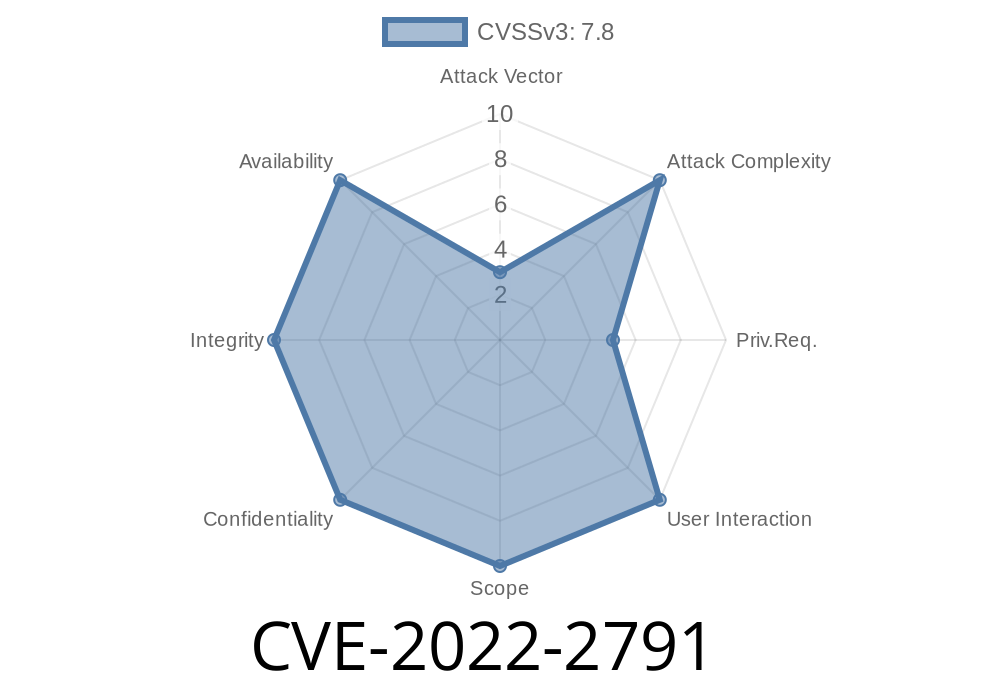Industrial control systems are at the heart of critical infrastructure. Any flaw here can have serious consequences. Emerson Electric's Proficy Machine Edition (version 9.00 and prior) is a tool widely used to program and manage PLCs (Programmable Logic Controllers) in factories. But recently, a vulnerability tracked as CVE-2022-2791 was found. This vulnerability allows any file—including dangerous executables or scripts—to be uploaded straight into a PLC if dropped in the application’s logic folder. In this article, we’ll break down what went wrong, how an attacker might exploit it, and what you can do to stay safe.
What is CVE-2022-2791?
In simple terms, CVE-2022-2791 is an Unrestricted File Upload bug, formally known as CWE-434. The bug lives in the component of Proficy Machine Edition that handles file uploads to PLC devices. The software does not check what kind of file you’re sending. Instead, it allows uploading _any_ file placed inside the PLC logic folder—no questions asked.
Why is it so dangerous?
Let’s say an attacker gets access to this folder—maybe by phishing or exploiting another weak spot. They can drop malicious files that will end up on the connected PLC. Since PLCs control real-world equipment, this could allow tampering, sabotage, or further spread of malware.
Simple Exploit Scenario
Suppose you’re an attacker who has access to a system running Proficy Machine Edition 9.00 that’s connected to a PLC. You want to push a file (let's say, a rogue script or a malware payload) into the logic folder.
Identify the PLC Logic Folder
Prepare Malicious File
This could be any file format, for example, a reverse shell, or a script that tries to execute system commands on the PLC (depending on the PLC’s file handling and OS).
src = 'malicious_payload.exe'
dst = r'C:\Program Files (x86)\Proficy\Machine Edition\Projects\MyPLCProject\Logic\malicious_payload.exe'
Sync with PLC
When Proficy ME next syncs with the PLC, it will push *everything* in the Logic folder—including this new malicious file—to the PLC.
Impact
Depending on what the PLC does with unknown files, they could get executed, stored, or used for future attack steps. Infected devices can pave the way for lateral movement or create backdoors.
Real World Impact
- Industrial Espionage: Attackers could extract proprietary data from the PLC-controlled processes.
Sabotage: Plant processes can be disrupted by rogue PLC code.
- Malware Distribution: Attackers could spread PLC-focused ransomware or worms (e.g., Stuxnet-style).
How to Fix
Emerson recommends updating to a fixed version after 9.00. You can check the official advisory for patch details. Here are quick mitigations:
Reference Links
- CISA ICS Advisory ICSA-22-243-02
- CVE Details: CVE-2022-2791
- CWE-434 Unrestricted Upload of File with Dangerous Type
Final Thoughts
This case shows that even trusted tools for managing PLCs can hide dangerous vulnerabilities. Always keep control software up-to-date, restrict folder and device access, and audit your automation environments. Vulnerabilities like CVE-2022-2791 are reminders that cybersecurity is as important on the factory floor as it is in the IT office.
Timeline
Published on: 11/22/2022 20:15:00 UTC
Last modified on: 11/26/2022 03:32:00 UTC
